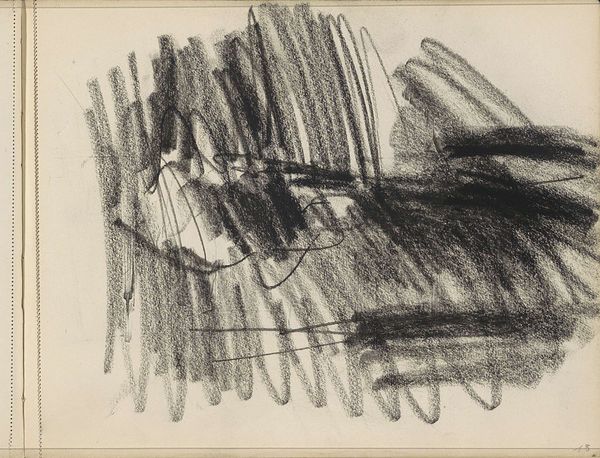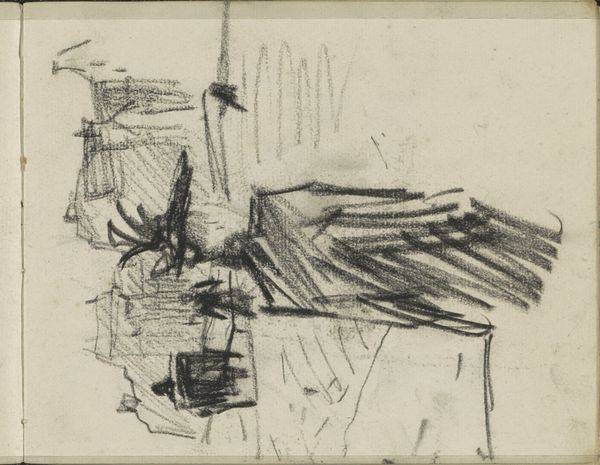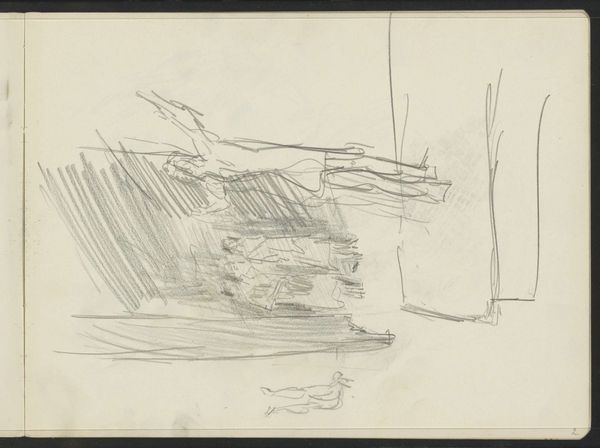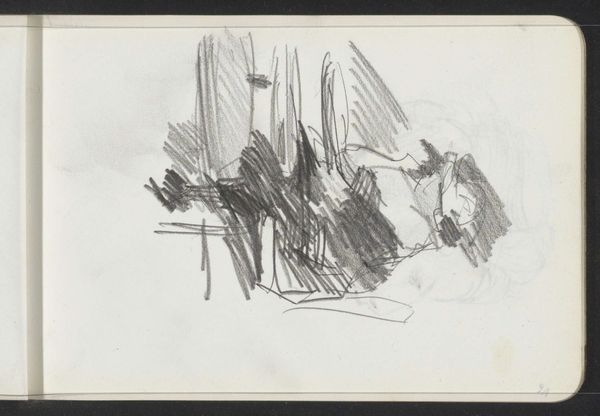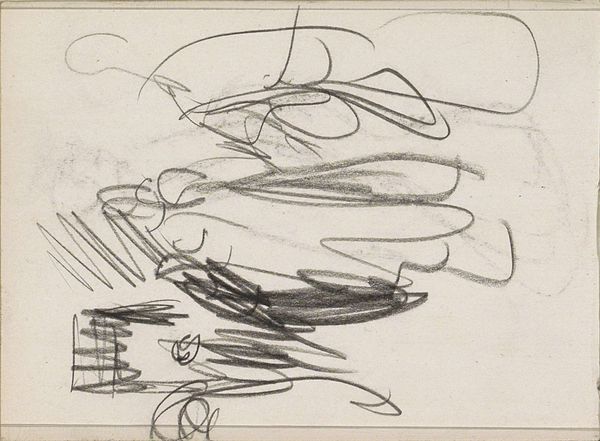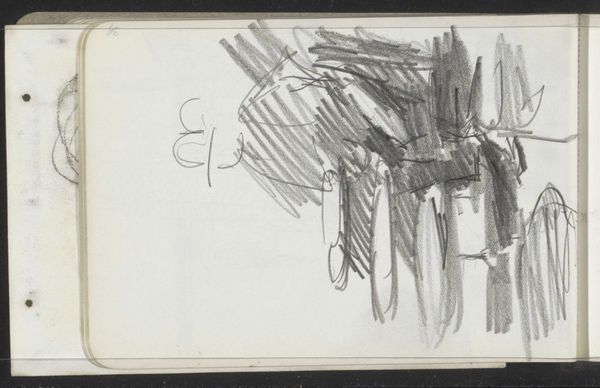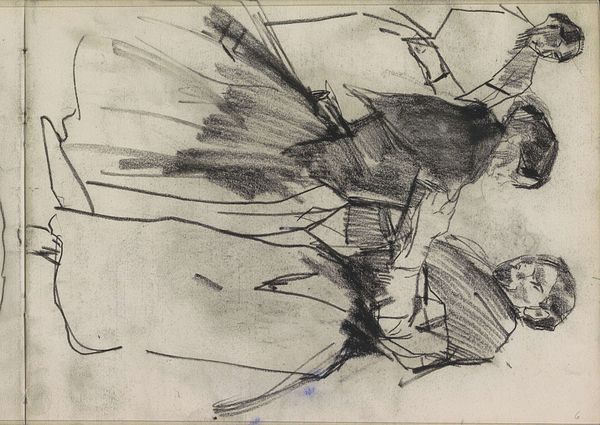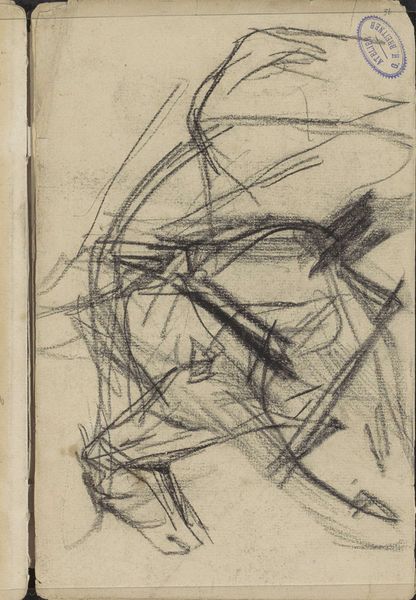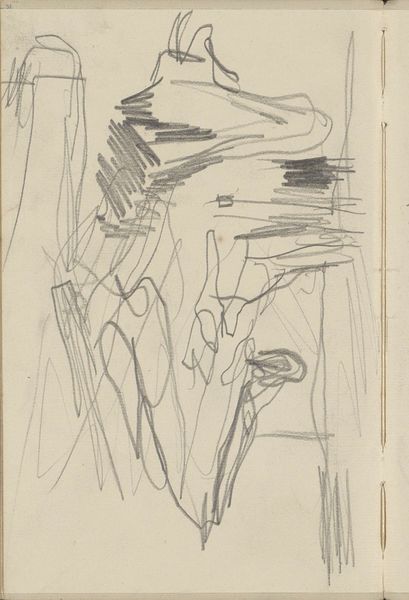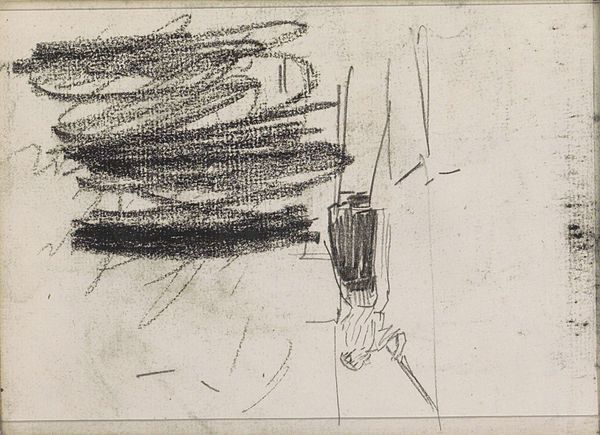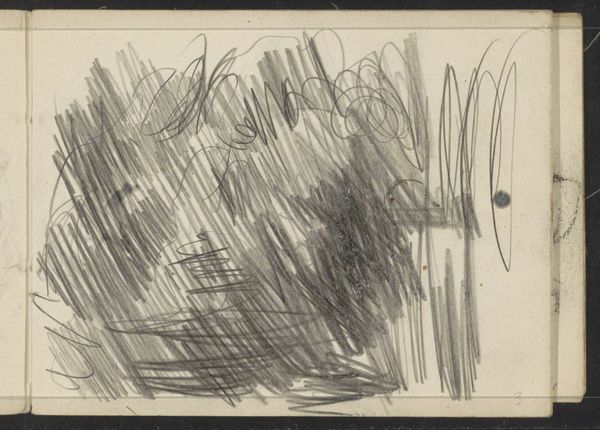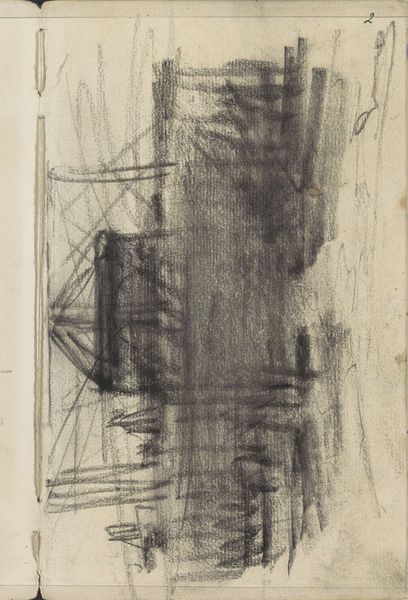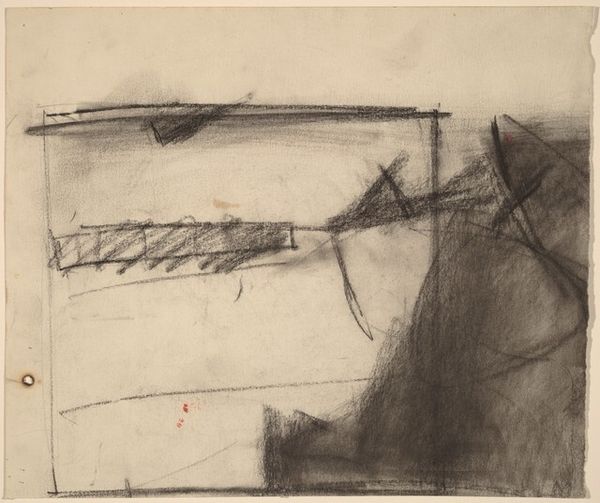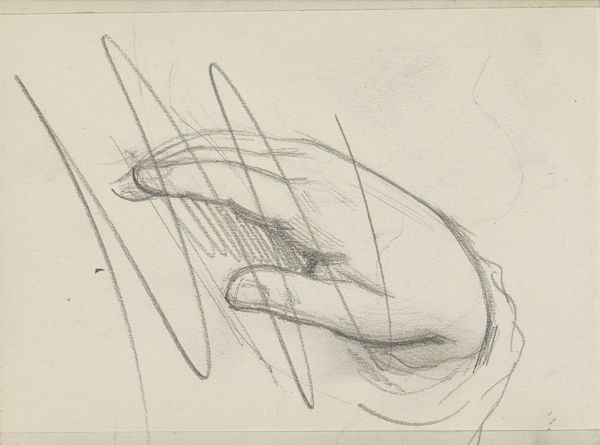
Copyright: Rijks Museum: Open Domain
Editor: We're looking at "Studie" by Isaac Israels, dating from around 1875 to 1934. It's a graphite drawing on paper, and frankly, it strikes me as...chaotic. A jumble of lines and shapes. What do you see in this piece? Curator: Chaotic, yes, but delightfully so! Think of it as visual jazz, a spontaneous riff. To me, it feels like stepping into the artist's mind, catching a glimpse of their process. Israels wasn’t trying to create a perfect, polished image, but rather to capture the essence of a form, perhaps an idea. Does it remind you of anything? Editor: A demolished building, maybe? Or abstract expressionism, but way earlier? Curator: Good eye! There’s a definite energy to the lines. Consider the time period. Impressionism was all about capturing fleeting moments. Could this be an artist rapidly sketching what he saw, boiling down reality to its most basic components? Perhaps in preparation for a painting, what do you think about it? Editor: That makes sense. Like visual shorthand, almost. But why so abstract? Curator: Because sometimes the feeling, the impression, is more important than perfect representation. The unfinished quality gives it an immediacy, doesn't it? A rawness. What happens if you don't aim for photographic accuracy, but instead prioritize movement or energy? What are the other reasons, maybe technical, according to you? Editor: I guess it lets the viewer fill in the gaps. To bring their own interpretation. I appreciate how loose it feels, actually. It's a reminder that art doesn't always have to be perfect to be powerful. Curator: Precisely! And in that imperfection, we find a unique beauty, a connection to the artist's hand, the artist’s way of seeing. Almost like getting to see a work in progress. It inspires curiosity in everyone, beginner or expert.
Comments
No comments
Be the first to comment and join the conversation on the ultimate creative platform.
